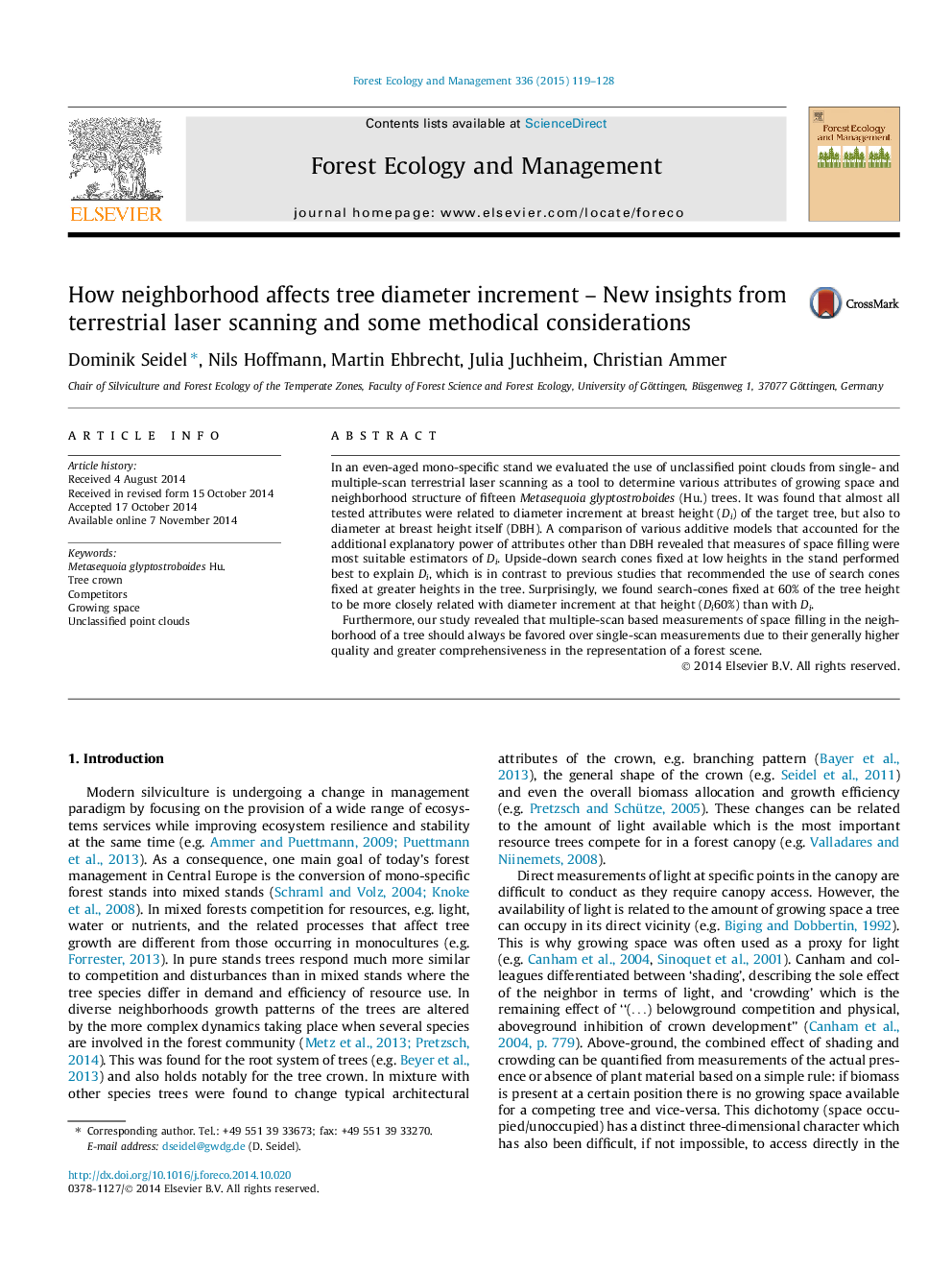| Article ID | Journal | Published Year | Pages | File Type |
|---|---|---|---|---|
| 86423 | Forest Ecology and Management | 2015 | 10 Pages |
•TLS-based measures of space filling in a tree’s vicinity are related to its growth.•DBH is related to all tested measures that describe the neighboring forest.•Diameter growth at 60% of tree height is closely related to competition.
In an even-aged mono-specific stand we evaluated the use of unclassified point clouds from single- and multiple-scan terrestrial laser scanning as a tool to determine various attributes of growing space and neighborhood structure of fifteen Metasequoia glyptostroboides (Hu.) trees. It was found that almost all tested attributes were related to diameter increment at breast height (Di) of the target tree, but also to diameter at breast height itself (DBH). A comparison of various additive models that accounted for the additional explanatory power of attributes other than DBH revealed that measures of space filling were most suitable estimators of Di. Upside-down search cones fixed at low heights in the stand performed best to explain Di, which is in contrast to previous studies that recommended the use of search cones fixed at greater heights in the tree. Surprisingly, we found search-cones fixed at 60% of the tree height to be more closely related with diameter increment at that height (Di60%) than with Di.Furthermore, our study revealed that multiple-scan based measurements of space filling in the neighborhood of a tree should always be favored over single-scan measurements due to their generally higher quality and greater comprehensiveness in the representation of a forest scene.
